

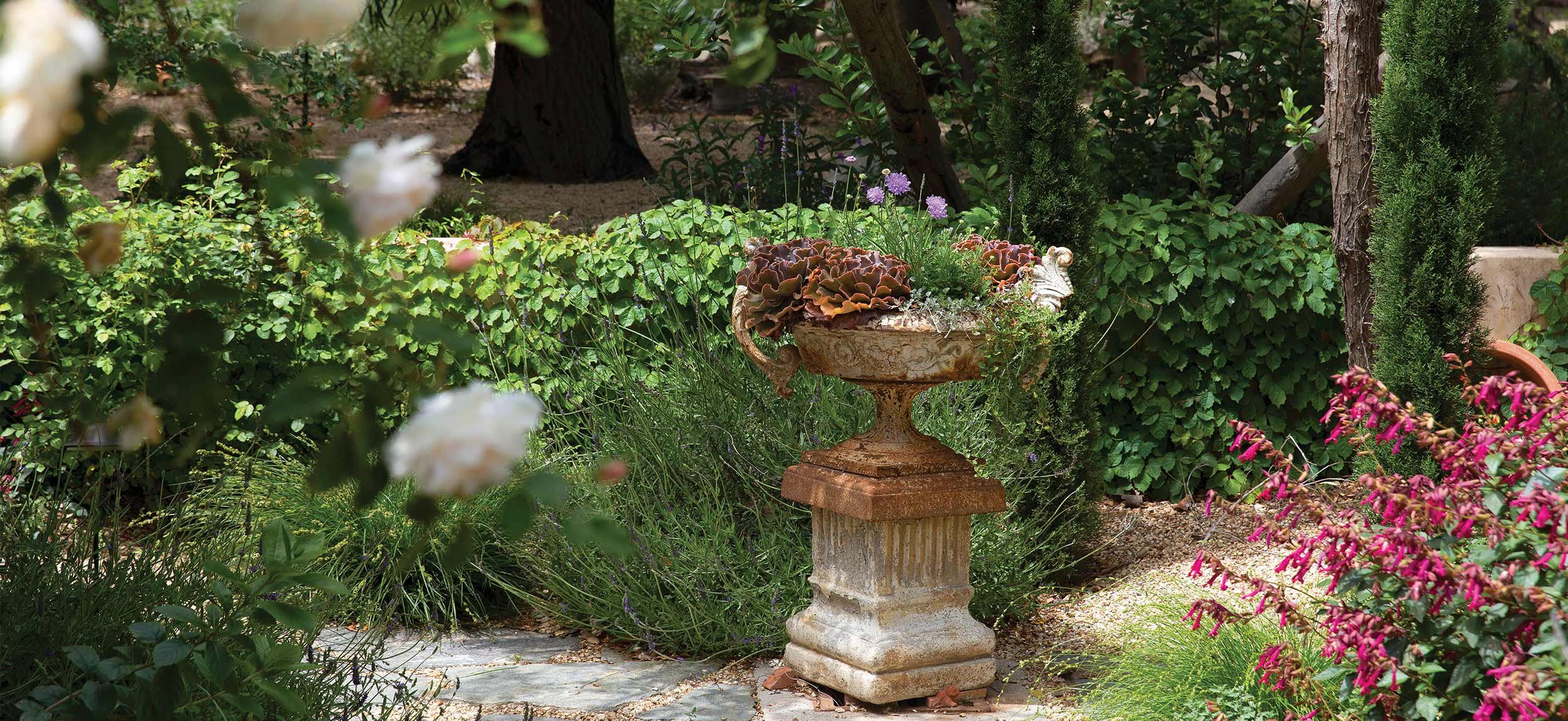
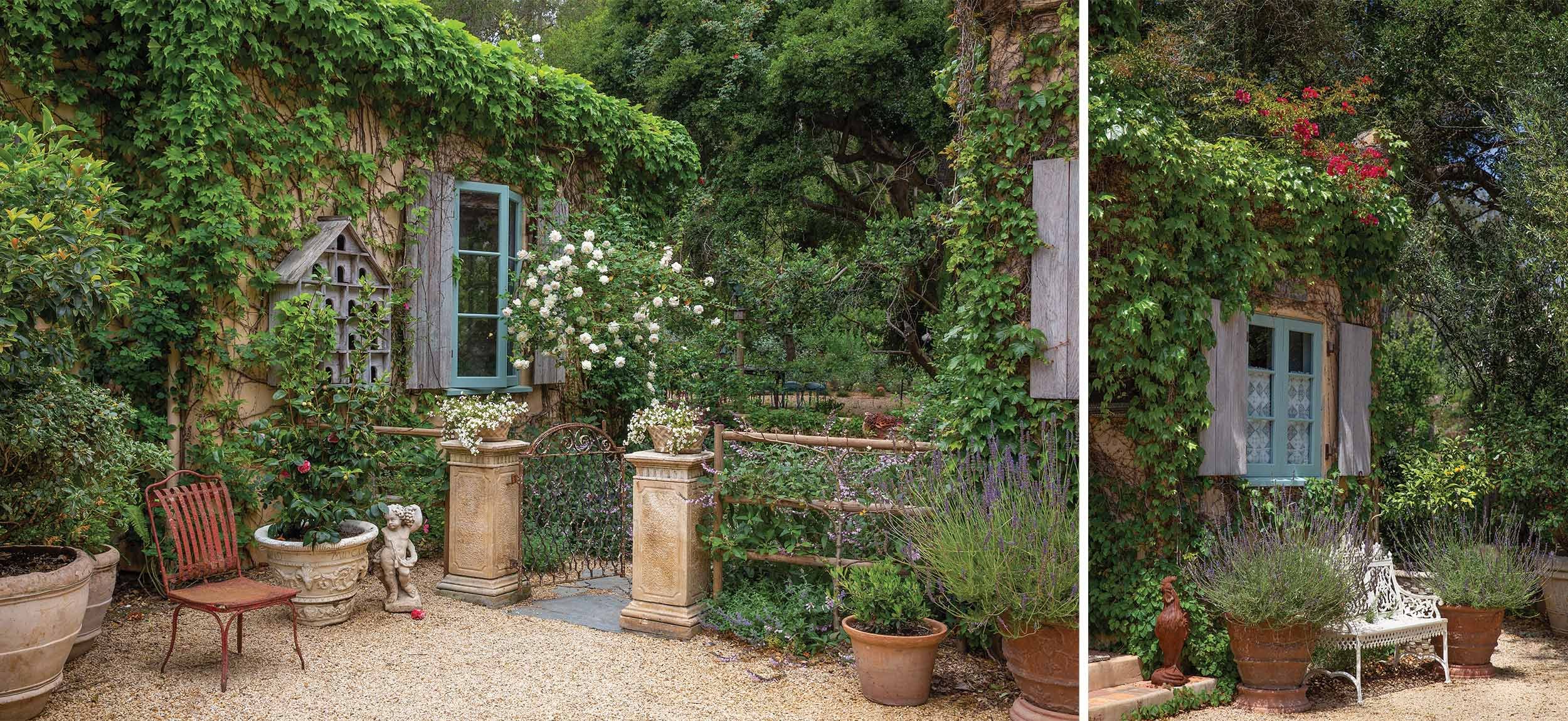
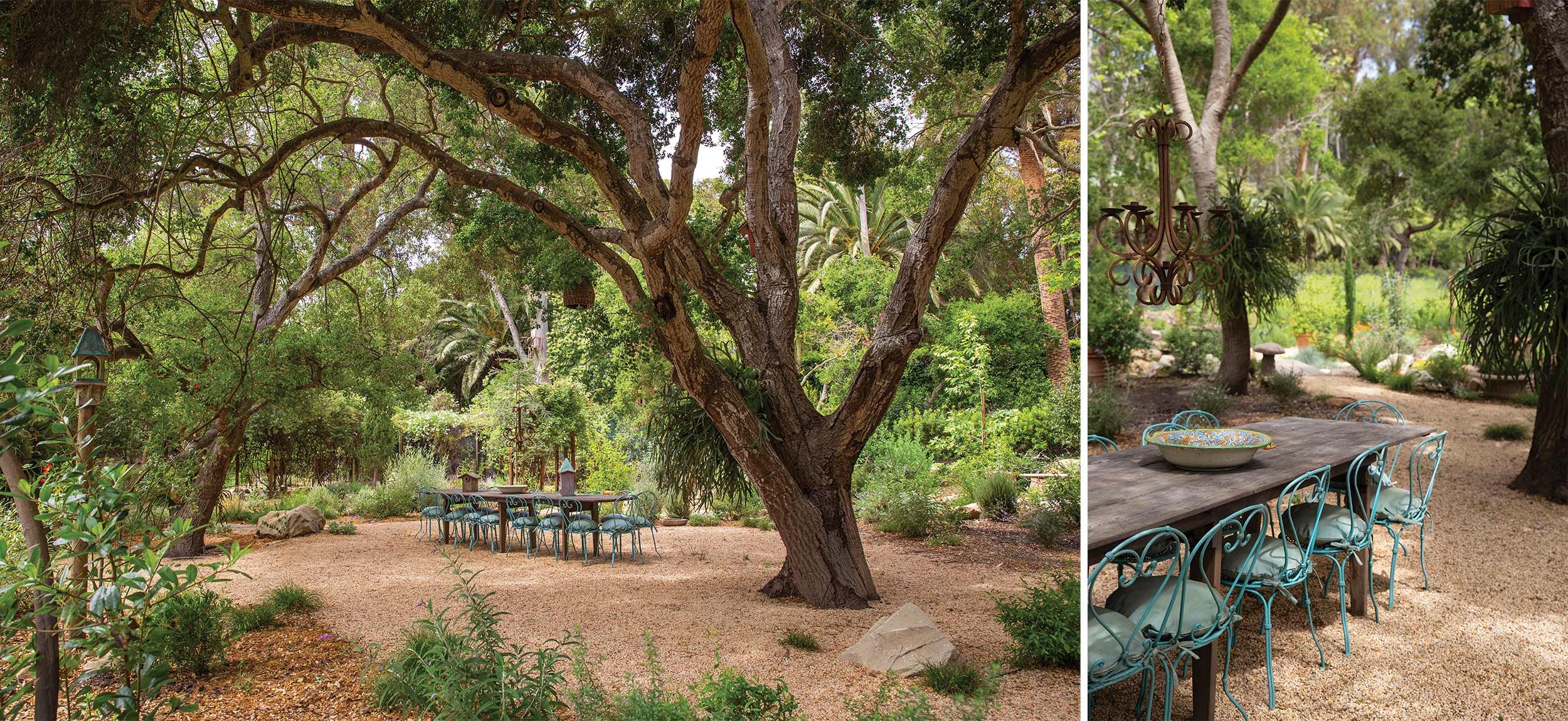
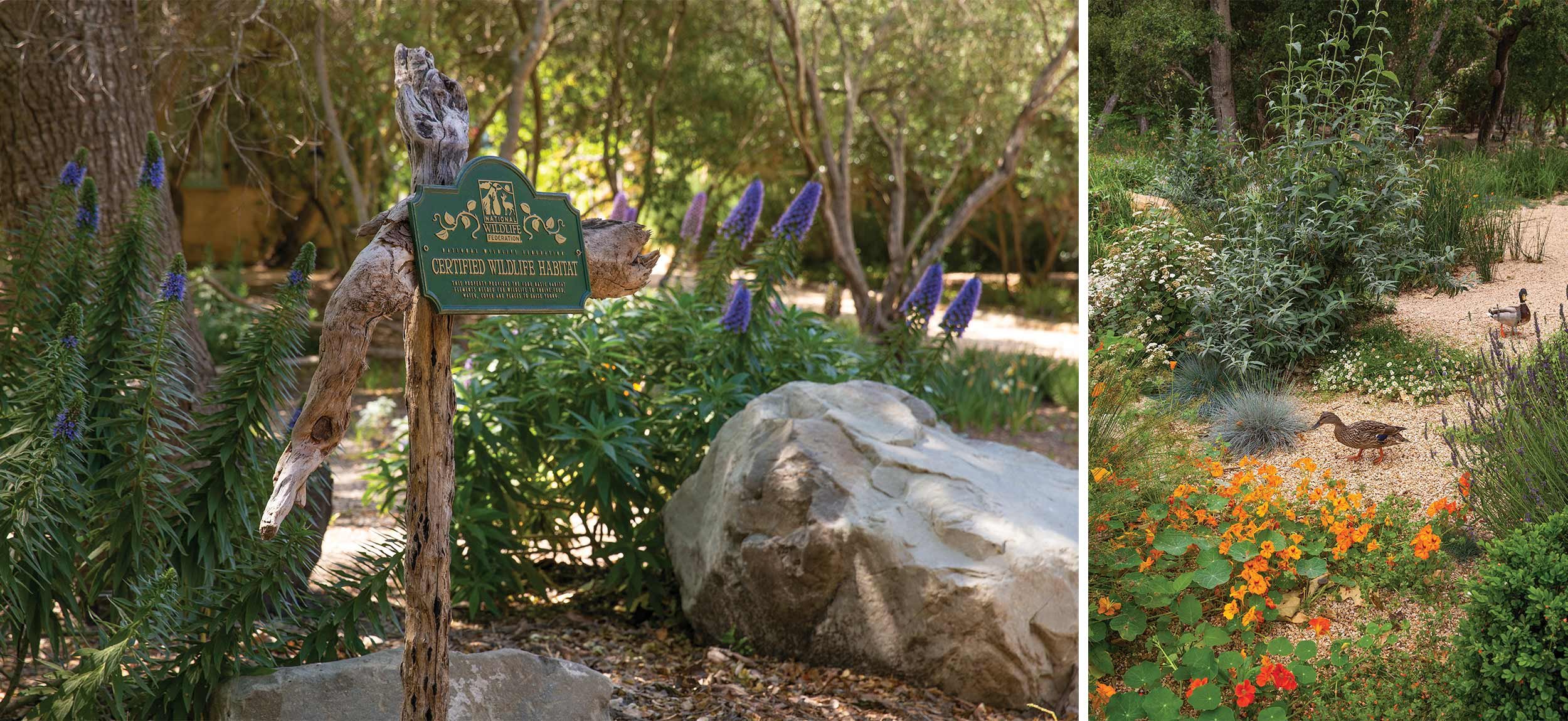

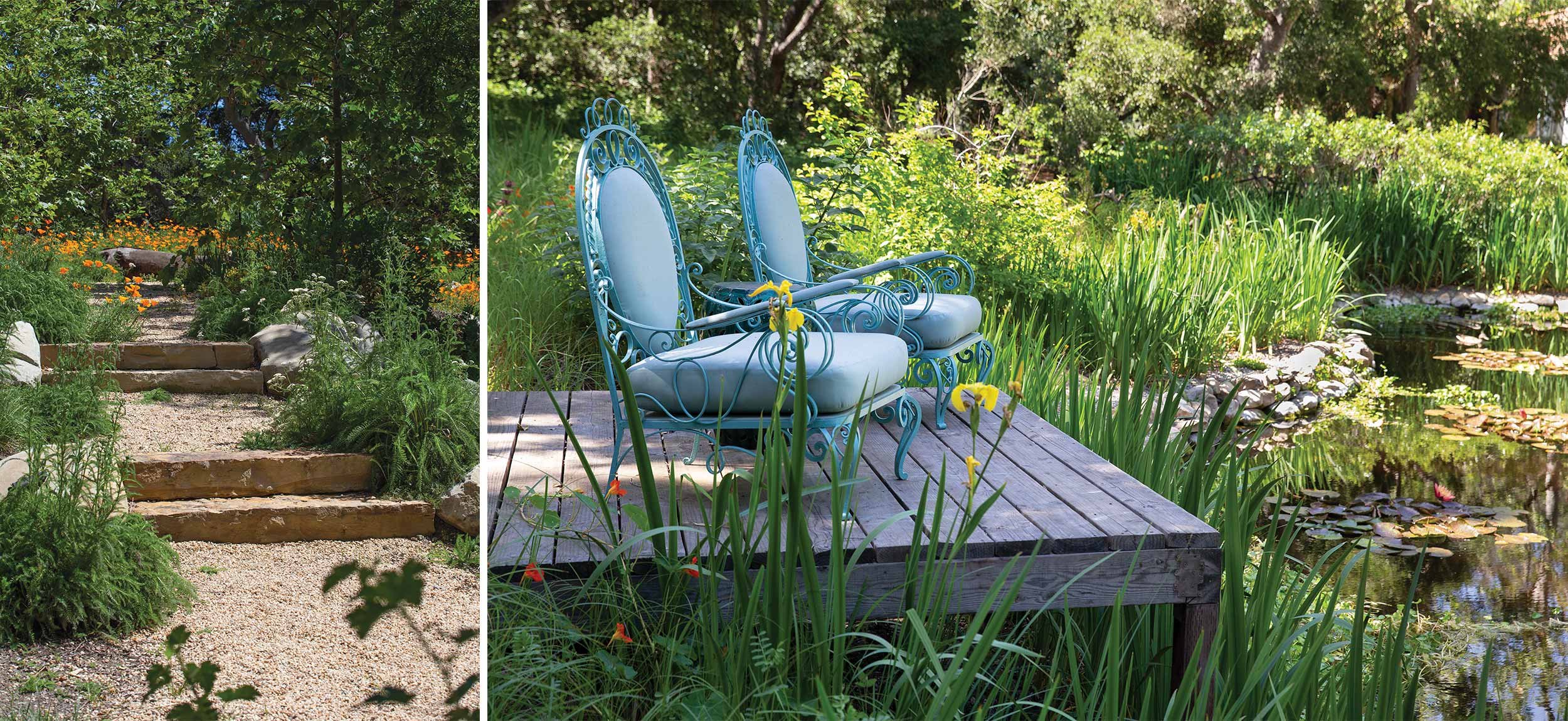
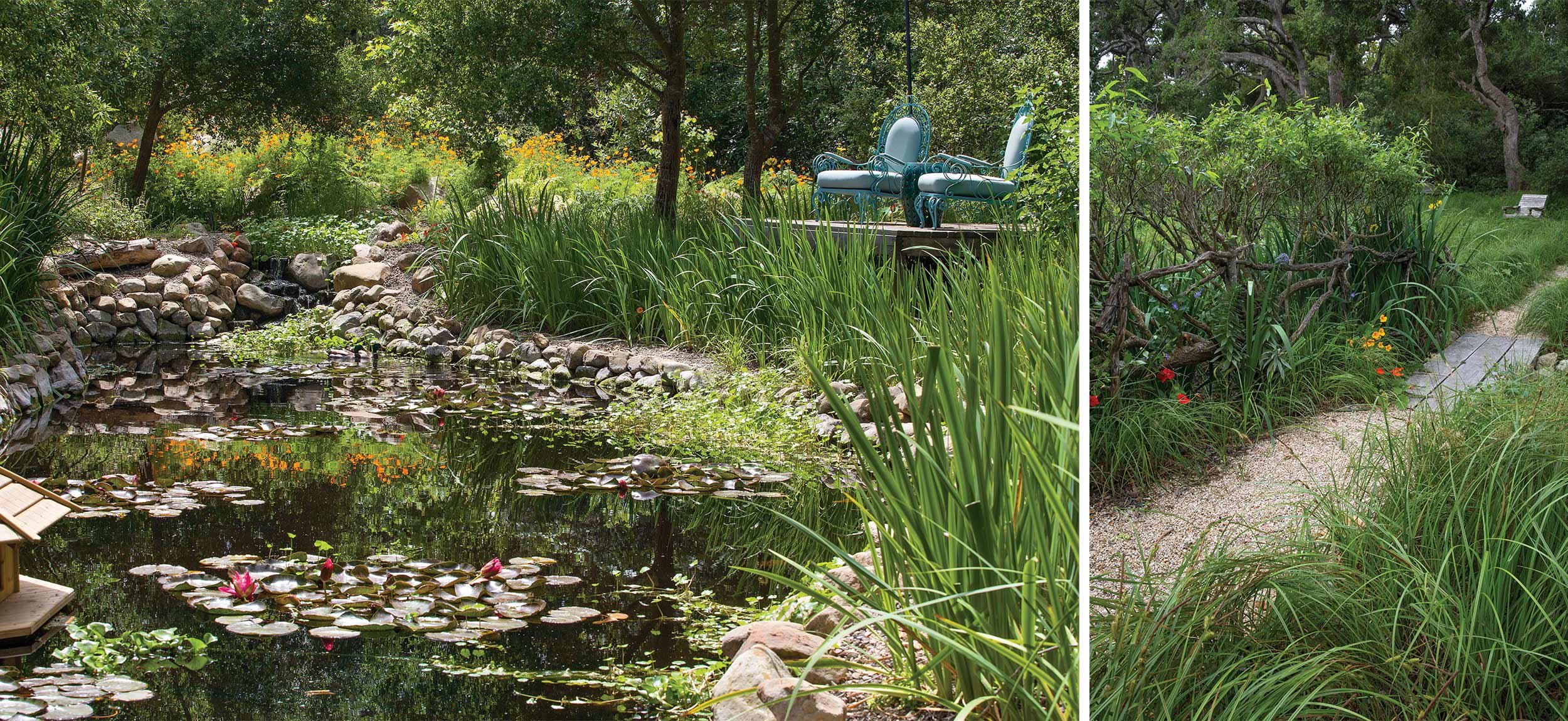

Wildlife Refuge
The devastating 2018 Montecito Debris Flow left this site covered in three feet of mud and detritus. The images on these pages were taken a mere eight months after the award-winning garden—which we had built in 2004—was restored from the ground up.
Flanked by a large nature preserve on one side and a well-treed estate on the other, the two-acre lot is surrounded by more than eighty-five acres of wooded land. The greenbelt, a vast tract of coastal oak woodland and a stand of eucalyptus used by overwintering monarch butterflies, is home to a range of wildlife. Notable species include coyotes, bobcats, hawks, quail, doves, owls, and mallards. Songbirds, bats, butterflies, native pollinators, reptiles, and amphibians are plentiful too.
The homeowners’ request eighteen years ago, when we built the original garden, was for a landscape that would provide additional wildlife habitat and blend with the larger landscape surrounding the property. After surviving the devastating debris flow, their direction to us was to recreate the habitat and the “garden-y bits too.”
A narrow band of “garden-y” plants surrounds the house. Plantings quickly transition from structured to a rich tapestry of wilder, drought-tolerant plants selected for their habitat value. Nesting boxes house bluebirds, bats, and owls. Snags and dead trees provide perches for birds of prey, habitat for grubs, and housing for a colony of honeybees.
California quail are prolific, drawn by their favorite native foods, abundant nesting material, and dense, protective shrub cover. The large pre-disaster pond, now restored, attracts a wide variety of native species—mammals, birds, insects, and turtles—and is a favorite nesting site for mallards, whose young are inaccessible to predators in the floating duck houses.
The garden, which has been designated Certified Wildlife Habitat by the National Wildlife Federation, is a constant source of wonder and delight for the homeowners and garden visitors.




